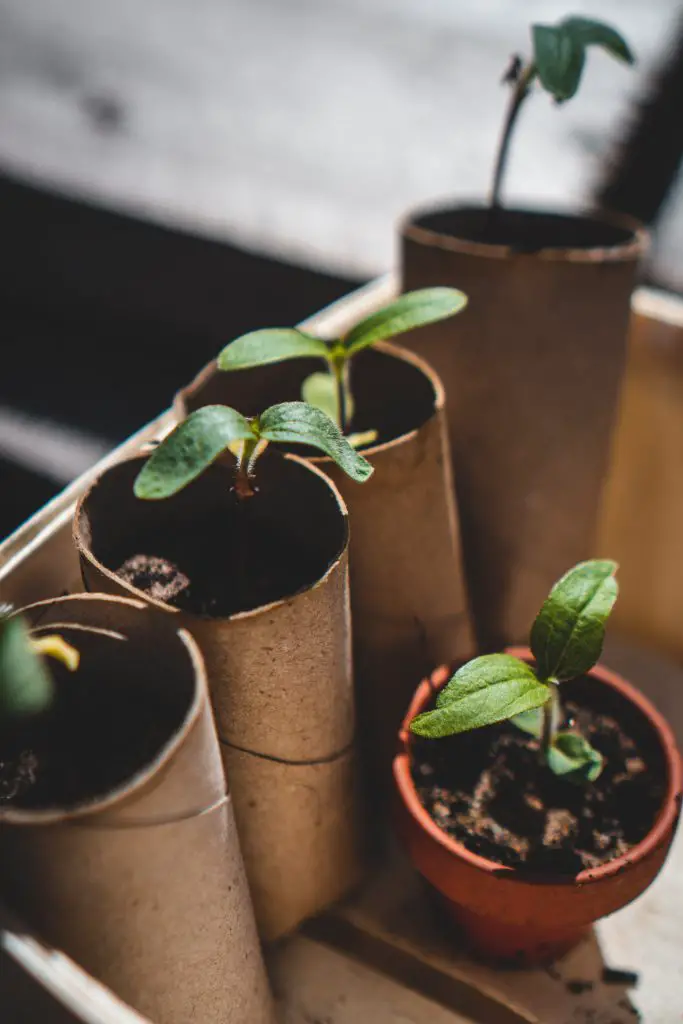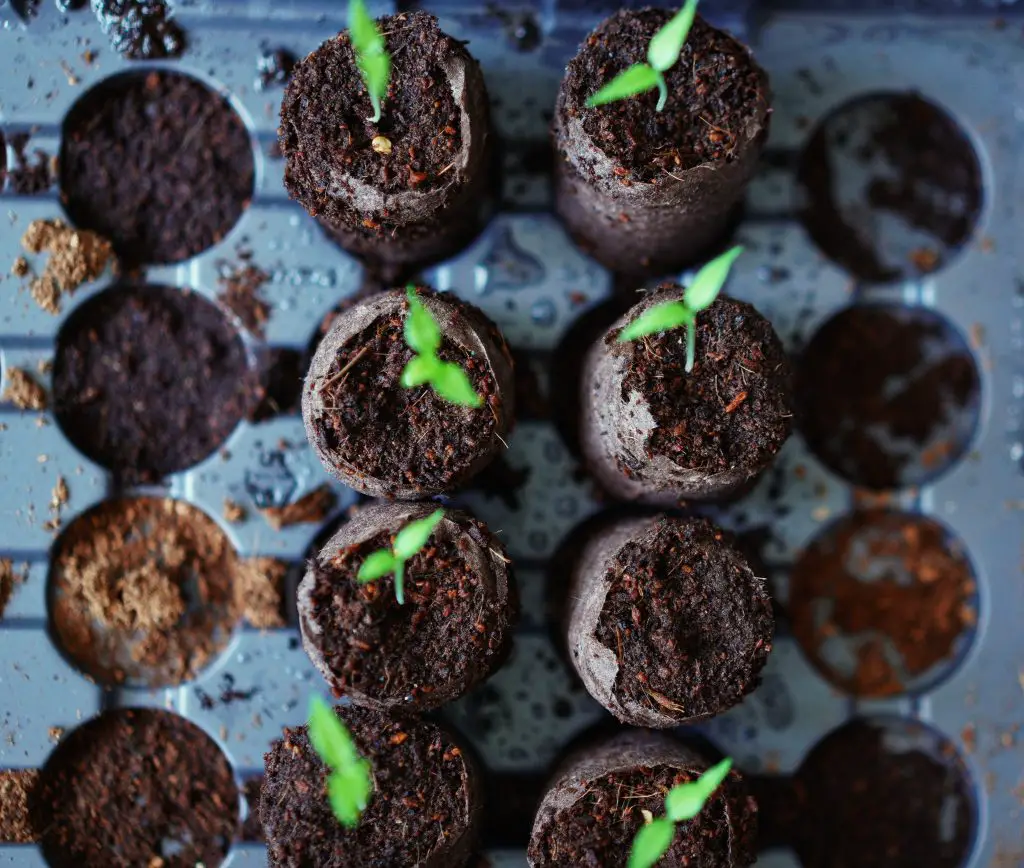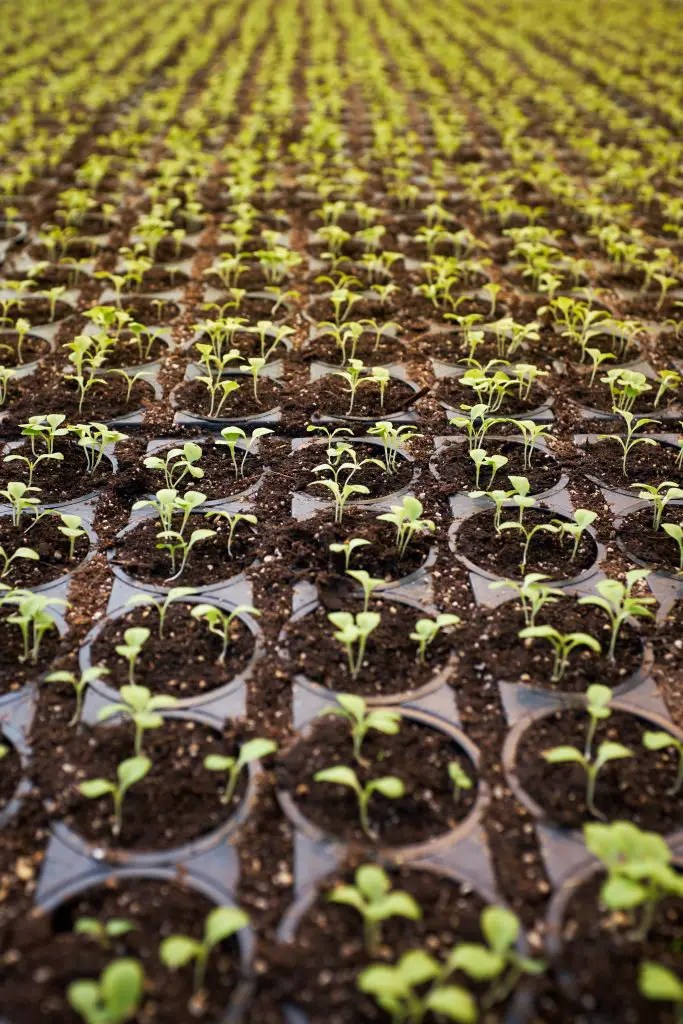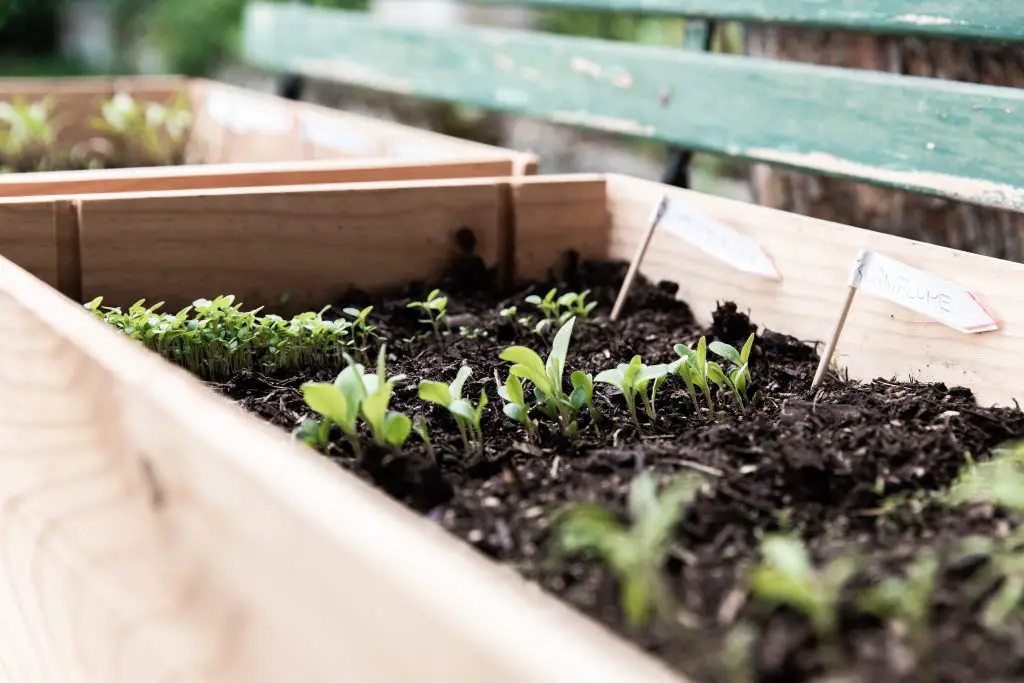Do Seed Trays Need Drainage Holes? And Should You Put A Saucer Under Them? Raising seeds is one of the quickest ways to get an early start on your seeds at home in the garden, particularly, if you live in an area that has a relatively short growing season as starting seeds off indoors. This can make a huge difference to what you can grow and produce in your garden. However, one of the most common questions that is asked is do seed trays need drainage holes.
Seed trays generally require drainage holes in most cases and any commercial trays that you purchase will have large numbers of drainage holes included in the product. However, they are not an absolutely essential feature to successfully grow seeds provided that the tray does not receive water in an uncontrolled manner as the seed trays can become quickly flooded. But as a general rule, it is advisable to have drainage holes.
So if you are using a commercial seed tray indoors it may be necessary to have a tray underneath to collect the water that drains through the seed trays. We generally recommend that trays be placed underneath because they can be used to reduce the frequency of watering.
This can be done by filling the trays in which the seed tray sits with only half an inch of water which is usually enough just to come into contact with the bottom of the seed-raising mixture in the soil. By doing this it will ensure that the soil remains constantly dam reducing the frequency of watering required.
However, it is important to note that you do need to be careful about the level of water that you use in the trays underneath as the soil can become sodden if the trays are filled up too much.

Do You Need To Cover Seed Trays With A Humidity Dome?
Most seeds and seedlings will benefit from being covered with the humidity dome, this is particularly the case if you are using a heating pad or a heated propagation tray because the heat source will accelerate the rate of evaporation of the water.
The use of the humidity dome also will aid in increasing the level of humidity and temperature around the seedlings which is beneficial to the growth rate and general health of the plants.
Can You Use Ordinary Garden Soil In Seed Trays?
Ordinary garden soil that is taken from your own garden is generally not recommended for growing seeds. The reason for this is that this soil will not be sterile and will contain a range of pathogens and weed seeds which will inevitably come up when you put the soil into the seed tray.
Having weeds come up with your seedlings can be problematic particularly if you have not grown the particular plant before and do not recognize what the seedlings look like as they can be easily confused for weeds.
The other additional problem is that garden soils can vary substantially in their quality and can often not ideally be suitable for growing seeds because they are either too sandy and lack water retention or contain too much clay and retain too much water which can be at detrimental to the development of the young seedlings.

Should Seed Raising Mix Be Compressed Into Seed Trays
When seed raising mix is added to the seed tray one of the most common questions is do you need to compress or firm the soil into the seed tray. Many garden websites will advise filling up the seed trays and not compressing the soil at all to allow the roots to easily penetrate the soil by leaving it light and fluffy.
However, I generally recommend that you do the opposite for a couple of specific reasons. The first reason is because despite what many garden sites say the roots of plants are still capable of easily penetrating soils, particularly in cases where the seed-raising mix has been used because by its nature it is designed to be relatively light and fluffy and free draining.
The second reason is that soil that is compacted will actually reduce the level of root disturbance that occurs when the plants are eventually transplanted out into the garden which is beneficial for the progress of the plant.
This is particularly the case when seeds are grown in a modular seed tray that contains individual cells because the entire plug held in a cell can be picked up as a solid piece and directly transplanted into planting holes without having the soil around the seedlings’ root system disturbed.
This is a method that is highly recommended by renowned market gardener Charles Dowding who has over 35 years of experience growing vegetables at his home in the UK.

Is It Better To Use Open Seed Trays Or Ones Containing Individual Cells?
Either type of seed tray can be successfully used to grow almost any type of seed however there are certain times when open seed trays have advantages over ones containing individual cells or modules.
Open seed trays are ideally suited when you have very fine seeds that can be planted closely together in rows. Examples of this include sowing lettuce seeds or carrot seeds which can be planted very close together in long rows.
In these circumstances having open seed trays are far more convenient than having individual seed cells because you can use a hand trowel to pick up an entire row of seedlings and transfer them into a garden bed with pre-prepared furrows. This generally makes it much faster to transplant lines of seedlings and is generally more convenient.
However, if you are growing plants that prefer to be planted individually in or in small clumps planting in modular trays is generally a lot easier. Examples of this include things like tomatoes pumpkins or cucumbers.
One of the main reasons for this is because you can transfer the seedlings in the garden with a reduced level of root disturbance which helps to accelerate the rate of growth for the plants.

How Many Seeds Should You Put Into An Individual Cell?
As a general rule of thumb, it is recommended that you put in 2 to 3 seeds per cell for most types of flowers and vegetables. This number is generally recommended because it ensures that you get at least one seedling per cell coming up.
If you have the situation where you have all the seeds germinating then the seedlings can be thinned out leaving one seedling per cell to grow to its full size.
However, there are certain circumstances where planting additional seeds can be advantageous particularly if you’re growing vegetables. There is a technique known as multi-sowing which is ideal for growing certain types of vegetables which include things like, beetroot, onions, radishes, and turnips to name a few.
In these cases, if you plant 5 to 6 seedlings in A clump within a Cell with the aim of getting 4 to 5 seedlings coming up in each clump. There are several advantages in doing multi-sowing, the first is that increases the number of seeds you can fit in a seed tray substantially. Secondly, transplanting in clumps is much faster than planting individual seedlings.
Additionally, the maintenance of clumps is generally easier than individual seedlings because the clumps can be planted further apart without sacrificing yield which means that you can use a dutch hoe to remove small weeds which is generally much faster than weeding by hand.
However, it is important to note that the maximum number of seedlings is typically 4 to 5 in a clump as increasing the seed numbers beyond that number affects the size of the vegetables grown. However, the precise number that is recommended does vary from plant to plant. To see the recommended number of seeds per plant click on the link.
I hope you found this article useful and have great success growing your seeds at home in seed trays. If you have any additional comments or questions please leave them in the section below.
Relevant Articles
Do You Have To Use Seed Starting Mix?
Germinating Seeds In Paper Towel Vs Soil: What Are The Benefits?
Can I Use A Regular Heating Pad For Seedlings?
